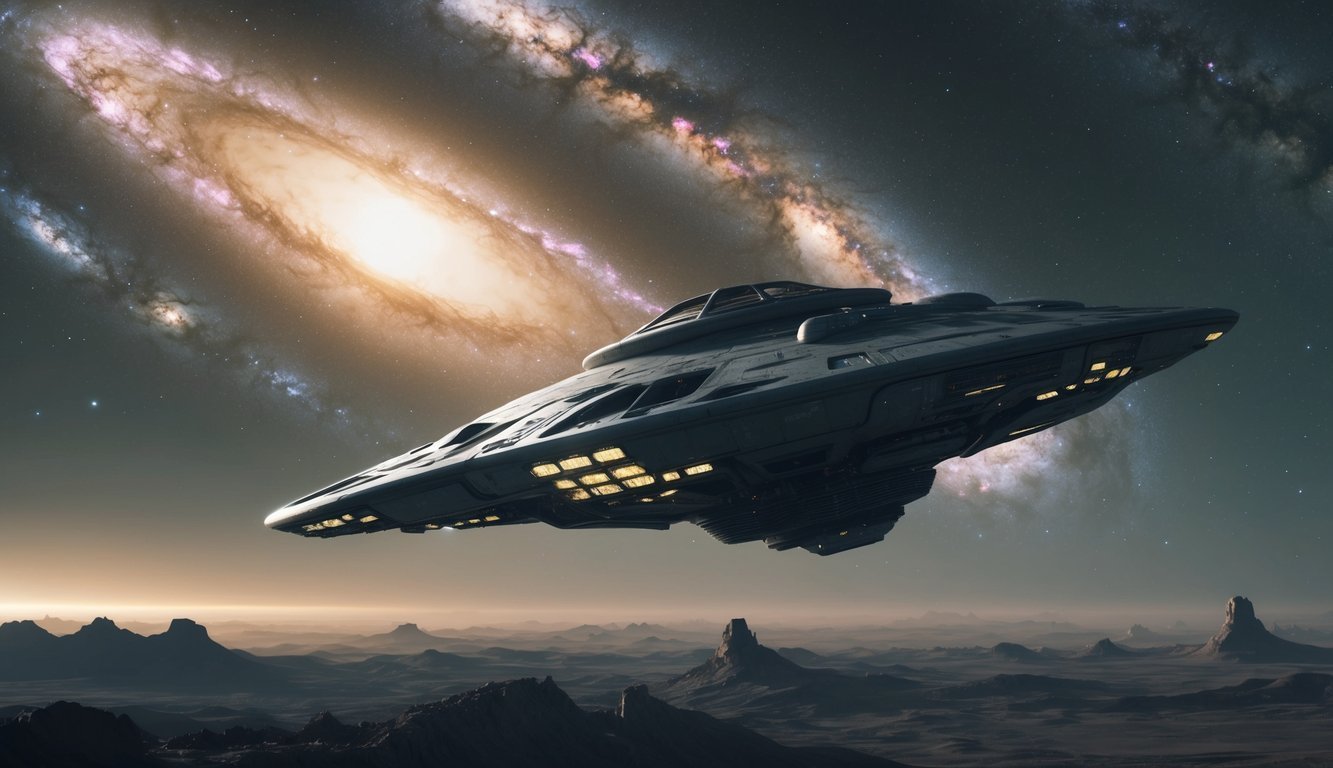Recent research has unveiled a startling proposition: advanced extraterrestrial civilizations might possess the capability to transform stars into mobile spacecraft, enabling them to traverse the galaxy and seek out resources. As we scan the cosmos, certain star systems emerge as promising candidates for this ambitious concept.
Civilizations in Motion
Clement Vidal, a researcher from Vrije University Brussels, has put forth a compelling theory suggesting that a civilization at the height of its technological prowess could steer a binary star system through the vast expanse of space. This extraordinary maneuver could serve multiple purposes, from evading catastrophic supernova events to harvesting new natural resources, or even fulfilling humanity’s insatiable thirst for exploration. Given the profound challenges of conventional interstellar travel, it may be more viable for these advanced beings to consider relocating their entire solar system.
The key advantage of such an approach lies in the preservation of their own star during transit. By manipulating the star’s emissions or inducing mass loss in a carefully calculated direction, they could effectively propel the entire system—including its orbiting planets—toward a new cosmic destination.
The Mechanics of Stellar Propulsion
While astronomers have previously speculated that certain “hypervelocity” stars might have been deliberately accelerated by extraterrestrial forces, the current evidence fails to substantiate these claims. Vidal’s paper highlights the abundant presence of binary star systems in the universe, suggesting that past research may have overlooked numerous potential targets for artificially accelerated stars. The dual nature of binary systems, with their inherent complexities, presents unique advantages for such groundbreaking maneuvers.
In an imaginative illustration of his hypothesis, Vidal introduces a model consisting of a neutron star paired with a low-mass companion star in close orbit. This configuration offers enhanced controllability and the potential for thrust generation. In this captivating scenario, the civilization would need to conceive a method for ejecting material from the star. Possible approaches may include harnessing asymmetric magnetic fields or employing tools to create uneven heating across the star’s surface. The aim would be to direct more material outward in one specific direction, thereby generating the necessary thrust to propel the binary system in the opposite direction.
Exploring the Cosmos
Strategically placing machinery on or near the neutron star, where its formidable gravitational pull could generate energy, would allow this advanced civilization to exert control over their binary star system. By intermittently activating the machinery, particularly at specific orbital points or adjusted orientations, they would precisely guide the trajectory of their stellar domain.
Intriguingly, real-world stellar systems exhibit similarities to Vidal’s proposed model, including the notorious “black widow” pulsar PSR J0610-2100 and the “redback” pulsar PSR J2043+1711. While it is improbable that these notable stellar behaviors are the result of alien technology, Vidal suggests that his thought-provoking hypothesis merits further exploration. As we continue to gaze at the stars, the notion that we are not alone in this vast universe—and that some beings may be crafting their own paths among the galaxies—adds a thrilling layer of complexity to our understanding of life beyond Earth.
“`html
Study Details:
- Title: Exploring the possibilities of interstellar migration through artificial stellar motion
- Authors: Clement Vidal
- Journal: arXiv (not peer-reviewed)
- Publication Date: November 2024
- Link: https://arxiv.org/abs/2411.05038
“`

